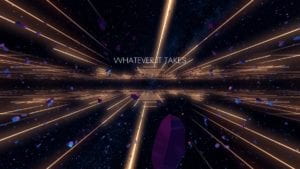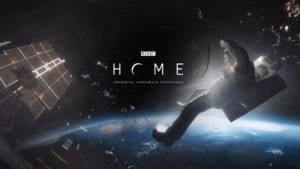BBC Home Spacewalk
Type: modeling (maybe some photography); Visual: 180, 3DOF; Sound: spatial effect not obvious;
Interaction: through gamepads;
Movement: move by grabbing “handles” in the game and pulling the virtual body forward. The player movement seems to follow a pre-determined trajectory most of the time.
Actions: Grab “handles”, occasionally take other “tools”.
Plot: A new astronaut joining ISS who went on a training session and inspect a damaged part of the space station.
What I liked:
1. Moving my virtual body by pulling the handle feels real. The relative movement of the virtual environment gives me a feeling that I moved up a bit in the real world.
2. The learning curve for interaction (at least in easy mode) is very friendly, I quickly learned how to grab things and navigate.
3. The plot is well-designed so that player can see what the ISS looks like, view Earth from space, witness a sunset, and experience an accident, all within a few minutes.
What I disliked:
1. The view is limited to about 180 degrees and no 6DOF. It is understandable that an astronaut’s view is limited but it could be better if the player has the agency to decide which direction to look.
2. Since the setting is in the space, we can’t experience strong spatial sound effect, which could make VR more real.
3. During the scene where the astronaut spins away from ISS, I got really dizzy and wanted to take off the headset to rest. Without any feeling of movements from the body, this kind of visual makes me uncomfortable.
Meet the miner WDR
Type: modeling; Visual: 360, 6DOF; Sound: strong spatial effect.
Interaction: through real body movements(walking and bending), gamepads.
Movement: can walk around and tilt head to see more.
Actions: includes pick up, smash, shovel. Gamepads have vibrating feedback when the tool held by the player hits a hard surface.
What I liked:
1. Player can move around, bend body or tilt head to see more details of the environment and NPCs. Sound is spatial and light condition is rendered real-time according to the position of the lantern that the player holds.
2. Items that can be picked up or acted upon are highlighted, forming clear instructions about what to do next.
3. The vibration feedback is well synchronized with hand movement. When I used the pick to hit the rock, the vibration, sound, and visuals are all happening together.
What I disliked:
1. Player doesn’t have much agency in the game and follows instruction most of the time.
2. The space that a player can move around is relatively small. Player is tele-transported to the next position in a black-out transition.
Virtual Tour of Dunhuang Cave
Type: photography (static picture); Visual: 360, 6DOF; Sound: no spatial sound effect, plain background music.
Interaction: through real body movements(walking and bending), gamepads.
Movement: use gamepad to point at the place to tele-transport to.
Actions: focus for five seconds to watch visual-audio explanation of part of the frescos, use the gamepad as a flashlight to lighten up part of the wall, point the gamepad and click to tele-transport.
What I liked:
1. The scene of Dunhuang Cave, though static, is 360 and 6DOF. As we discussed in last class, a 6DOF picture is really hard to capture. Yet, one can look from any angle in this VR tour.
2. The VR flashlight achieves something not feasible in real-life frescos visit – light will damage the delicate artwork. This VR tour is beyond the limits of a real tour.
3. The tele-transport function allows users to see the room from more angles (even from the ceiling) and observe the patterns on the wall close-up (closer than 10 centimeters).
What I disliked:
1. There is no sound effect that is spatial and simulates the experience in a cave. The plain background music is okay but not as immersive.
2. The room in the cave is well-lit, which is not realistic since the light should only come from the entrance in reality. This makes the room more like a model than a real picture.
I also viewed many other titles including Accounting (which I think is immersive and have the cool concept of VR in VR), Medical deck (model of human body and organs with both hands as tool to shape and edit like in tilt brush), and Primitive (which visualizes a complex program), and more. But the three ones above gave me most thoughts regarding its VR techniques.

